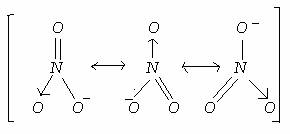Ask questions which are clear, concise and easy to understand.
Ask QuestionPosted by Anmol Kaur 5 years ago
- 5 answers
Yogita Ingle 5 years ago
Molarity is given by M=nsolute/Vsolution here V is the volume of the solution which is temperature dependent.
Molality is given by m=nsolute/Wsolution Wsolvent is the mass of solvent which is independent of temperature.
Normality is given by N=nequivalent solute/Vsolution
Here, it is dependent on volume which is temperature dependent.
Mole fraction is dependent on the amount of substance which is temperature independent.
Therefore, Molality and mole fraction are temperature independent.
Posted by Sneha Kakadiya 5 years ago
- 1 answers
Sanjana Dua?????❣️ 5 years ago
Posted by All Rounder Mkjha 5 years ago
- 5 answers
Rajalakshmi Subramanian 5 years ago
Sneha Kakadiya 5 years ago
Tanya ?? 5 years ago
Posted by Raksha Yaduwanshi 5 years ago
- 2 answers
Rajalakshmi Subramanian 5 years ago
Sneha Kakadiya 5 years ago
Posted by Angki Modi 5 years ago
- 2 answers
Sarkeerat Dhammu 5 years ago
Posted by Nantha S Kumar 5 years ago
- 1 answers
Yogita Ingle 5 years ago
The salt is cadmium cloraid CdCl2,here charge on cadmium Cd+2 is higher than silver Ag+
Posted by Dgf Chd 5 years ago
- 1 answers
Yogita Ingle 5 years ago
The resonating structures of nitrate ion NO3- are:

Bond order of NO bond is = 4/3 = 1.33
Posted by Dgf Chd 5 years ago
- 1 answers
Yogita Ingle 5 years ago
Elements whose f orbital getting filled up by electrons are called f block elements. These elements have electrons, (1 to 14) in the f orbital, (0 to 1) in the d orbital of the penultimate energy level and in the outermost’s orbital. The general outer electronic configuration of f block elements is (n−2)f(0−14)(n−1)d(0−1)ns2.
Posted by Dgf Chd 5 years ago
- 2 answers
Yogita Ingle 5 years ago
Elements whose f orbital getting filled up by electrons are called f block elements. These elements have electrons, (1 to 14) in the f orbital, (0 to 1) in the d orbital of the penultimate energy level and in the outermost’s orbital. The general outer electronic configuration of f block elements is (n−2)f(0−14)(n−1)d(0−1)ns2.
Posted by Dgf Chd 5 years ago
- 1 answers
Yogita Ingle 5 years ago
Elements whose f orbital getting filled up by electrons are called f block elements. These elements have electrons, (1 to 14) in the f orbital, (0 to 1) in the d orbital of the penultimate energy level and in the outermost’s orbital. The general outer electronic configuration of f block elements is (n−2)f(0−14)(n−1)d(0−1)ns2.
Posted by Dgf Chd 5 years ago
- 1 answers
Yogita Ingle 5 years ago
D block elements are the elements which can be found from the third group to the twelfth group of the modern periodic table. The valence electrons of these elements fall under the d orbital. D block elements are also referred to as transition elements or transition metals. The general outer electronic configuration of d block elements is (n−1)d(1−10)ns(0−2).
Posted by Dgf Chd 5 years ago
- 2 answers
Posted by Faizan Ali 5 years ago
- 1 answers
Yogita Ingle 5 years ago
Coordination number is the number of nearest neighbors with which a given atom is in contact. In an ionic crystal, the coordination number of an ion refers to the number of oppositely charged ions that surround that ion.
Posted by Anupam Awasthi 5 years ago
- 1 answers
Yogita Ingle 5 years ago
Density of solution =
Density of ethanol (solute)=
Molar mass of ethanol (solute) = 46.07 g/mole
20 % aqueous ethanol solution by volume means that the 20 ml of ethanol is present in the 100 ml of solution.
So, the volume of solution = 100 ml
Volume of ethanol (solute) = 20 ml
First we have to calculate the mass of solution.
Now we have to calculate the mass of solute, ethanol.
Now we have to calculate the mass of solvent.
Now we have to calculate the molarity of solution.
Now we have to calculate the molality of solution.
Therefore, the molarity and molality of solution is, 3.425 mole/L and 4.269 mole/Kg respectively.
Posted by Jahnavi Laller 5 years ago
- 3 answers
Riya Mahapatra 5 years ago
Posted by Vishal Khandelwal 5 years ago
- 1 answers
Posted by Anjali Sharma 5 years ago
- 2 answers
Yogita Ingle 5 years ago
The Van’t Hoff factor offers insight on the effect of solutes on the colligative properties of solutions. It is denoted by the symbol ‘i’. The Van’t Hoff factor can be defined as the ratio of the concentration of particles formed when a substance is dissolved to the concentration of the substance by mass.
The extent to which a substance associates or dissociates in a solution is described by the Van’t Hoff factor. For example, when a non-electrolytic substance is dissolved in water, the value of i is generally 1. However, when an ionic compound forms a solution in water, the value of i is equal to the total number of ions present in one formula unit of the substance.
Posted by Tanya ?? 5 years ago
- 3 answers
Priyanshu Kumar 5 years ago
Sanjana Dua?????❣️ 5 years ago
Vikas Kaushik 5 years ago
Posted by Baliyan ? 5 years ago
- 2 answers
Tanya ?? 5 years ago
Posted by Ayush Kumar 5 years ago
- 1 answers
Posted by Baliyan ? 5 years ago
- 4 answers
Swadha Mishra 5 years ago
Swadha Mishra 5 years ago
Gaurav Seth 5 years ago
Aldehydes having αhydrogen undergo self condersation on warming with dilute or mild base to give p-hydroxy aldahydes called aldols. This reaction is called aldol condersation
Posted by Baliyan ? 5 years ago
- 3 answers
Yogita Ingle 5 years ago
Sodium potassium tartrate is a double salt of tartaric acid with a chemical formula C4H4O6KNa·4H2O. It is also known as Rochelle salt or Potassium sodium tartrate.
It is a colourless to white crystalline powder with a cool and saline taste. It has a pH value of 6.5 – 8.5. It has a large piezometric effect which makes it widely useful in sensitive vibrational and acoustic devices.
Posted by Baliyan ? 5 years ago
- 1 answers
Yogita Ingle 5 years ago
Fehling’s solution is a deep blue alkaline solution which is used to identify the presence of aldehydes or groups that contain any aldehyde functional group -CHO and in addition with Tollen’s reagent to differentiate between reducing and non-reducing sugars. Fehling’s solution is also used to differentiate a ketone group and water-soluble carbohydrates.
Posted by Aryan Malik 5 years ago
- 0 answers
Posted by Baliyan ? 5 years ago
- 1 answers
Yogita Ingle 5 years ago
Sulphur sol and gold sol are Lyophobic sols and are unstable and are build to colloidal size from small particles by the Condensation method by Chemical reactions.
Oxidation sulphur sol is prepared by passing H2S into SO2
-
H2S + SO2 → S (sol) + H2O
-
Reduction of AuCl3 with formaldehyde gives gold sol.
AuCl3+ HCHO + 3H2O → Au (sol) + 3HCOOH + 6HCl

myCBSEguide
Trusted by 1 Crore+ Students

Test Generator
Create papers online. It's FREE.

CUET Mock Tests
75,000+ questions to practice only on myCBSEguide app
 myCBSEguide
myCBSEguide


Rajalakshmi Subramanian 5 years ago
0Thank You